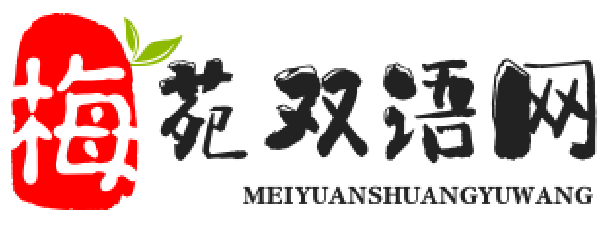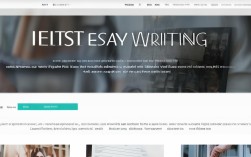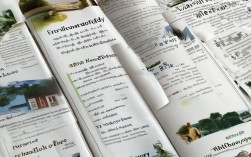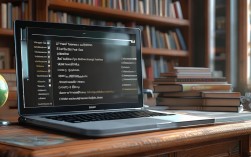2025年是全球疫情爆发的一年,雅思考试在上半年经历了大面积的取消,下半年才逐渐恢复常态,2025年的考题数量相对较少,主要集中在下半年,这些考题依然能很好地反映雅思写作的出题趋势和重点。

总体趋势分析
- 旧题重现率高:下半年恢复考试后,大量题目是过往几年(尤其是2025年)的旧题重现,这对于备考的考生来说是个好消息,因为重点复习高频旧题非常有效。
- 话题集中:题目主要集中在教育、科技、环境、政府、文化、全球化等传统高频话题上。
- 题型稳定:四大题型(同意与否、双边讨论、利弊分析、报告类)分布均匀,没有出现非常偏门的题型。
- 题目表述灵活:部分题目在表述上做了微调,但核心考点不变,考察考生对核心话题的理解深度和论证能力。
2025年雅思写作A类考题回顾
以下考题按月份整理,并附有简要的题目解析。
2025年9月 - 12月 (主要考题区间)
9月
-
9月12日
- Task 2: Some people think that the government should provide free education for all. To what extent do you agree or disagree?
- 解析:经典的政府职责与教育类话题,需要讨论免费教育的利弊,并给出自己的立场,可以从社会公平、国家发展、财政负担等角度展开。
- Task 1: 线图 (Line Graph) 描述了四个国家在1960, 1980, 2000, 2025年的谷物产量变化。
- Task 2: Some people think that the government should provide free education for all. To what extent do you agree or disagree?
-
9月19日
- Task 2: Some people believe that it is more important to teach science subjects than art subjects in schools. To what extent do you agree or disagree?
- 解析:教育类话题中的“文理之争”,需要比较科学和艺术教育的重要性,可以讨论科学对科技发展的推动作用,以及艺术对培养创造力和人文素养的重要性,最后给出平衡的观点。
- Task 1: 柱状图 (Bar Chart) 描述了2000年和2025年五个国家在不同年龄段(15-24, 25-39, 40-54, 55+)使用互联网的比例。
- Task 2: Some people believe that it is more important to teach science subjects than art subjects in schools. To what extent do you agree or disagree?
-
9月26日
- Task 2: Some people think that it is more effective for governments to spend money on public services than on the arts. To what extent do you agree or disagree?
- 解析:政府支出类话题,与上一题类似,但焦点在“公共服务”和“艺术”之间,公共服务(医疗、交通)关乎民生基本需求,艺术则关乎文化软实力和人民精神生活,需要权衡两者。
- Task 1: 表格 (Table) 比较了三个国家(澳大利亚、加拿大、新西兰)在2000年和2010年三项指标(平均每周工作时间、平均收入、失业率)的数据。
- Task 2: Some people think that it is more effective for governments to spend money on public services than on the arts. To what extent do you agree or disagree?
10月
-
10月10日
- Task 2: Some people think that the increasing use of technology in the workplace is making people more productive, while others believe it is creating more unemployment. Discuss both views and give your own opinion.
- 解析:科技类话题,典型的双边讨论题,技术提高效率、自动化生产;技术取代人力岗位,需要平衡论述,并给出自己的看法(技术确实会淘汰旧岗位,但会创造新岗位)。
- Task 1: 地图 (Map) 描述了一个小镇在1980年和2025年的中心区域变化。
- Task 2: Some people think that the increasing use of technology in the workplace is making people more productive, while others believe it is creating more unemployment. Discuss both views and give your own opinion.
-
10月17日
- Task 2: Some people argue that it is more important to plant trees in towns and cities than to build housing. To what extent do you agree or disagree?
- 解析:环境与城市规划类话题,需要比较植树和建住房的优先级,可以从环境(改善空气、降温)、健康(提供休闲空间)和住房需求(解决居住问题)两方面论证。
- Task 1: 饼图 (Pie Charts) 描述了某公司在2005年和2025年的市场份额构成。
- Task 2: Some people argue that it is more important to plant trees in towns and cities than to build housing. To what extent do you agree or disagree?
-
10月24日
- Task 2: Some people think that the government should ban dangerous sports. Others, however, believe that people should have the freedom to choose their favorite activities. Discuss both views and give your own opinion.
- 解析:个人自由与政府监管类话题,一方认为政府有责任保护公民安全,应禁止危险运动;另一方强调个人选择自由和运动的刺激性,需要讨论这两种价值观,并给出自己的立场。
- Task 1: 流程图 (Flow Chart) 描述了如何制作回收纸。
- Task 2: Some people think that the government should ban dangerous sports. Others, however, believe that people should have the freedom to choose their favorite activities. Discuss both views and give your own opinion.
11月
-
11月7日
- Task 2: Some people think that museums and art galleries should be enjoyable places to entertain people. While others believe that the purpose of these places is to educate. Discuss both views and give your own opinion.
- 解析:文化类话题,探讨博物馆和美术馆的核心功能,娱乐功能(吸引大众、增加收入)和教育功能(传播知识、传承文化)并不矛盾,可以论述如何将两者结合。
- Task 1: 柱状图 (Bar Chart) 描述了三个年龄段(18-30, 31-50, 51+)的人在过去一年中观看五种不同类型电影(喜剧、动作、科幻、剧情、恐怖)的比例。
- Task 2: Some people think that museums and art galleries should be enjoyable places to entertain people. While others believe that the purpose of these places is to educate. Discuss both views and give your own opinion.
-
11月14日
- Task 2: Some people think that it is a waste of money to spend money on protecting wild animals. To what extent do you agree or disagree?
- 解析:环境与动物保护类话题,需要论证保护野生动物的必要性(生物多样性、生态平衡、科研价值)和成本高昂的现实,最终给出自己的立场。
- Task 1: 线图 (Line Graph) 描述了澳大利亚从1975年到2000年城市和农村人口数量的变化。
- Task 2: Some people think that it is a waste of money to spend money on protecting wild animals. To what extent do you agree or disagree?
-
11月21日
- Task 2: Some people think that history is of little use to us. Others believe that studying history helps us know the present. Discuss both views and give your own opinion.
- 解析:教育类话题,探讨历史学科的价值,一方认为历史是过去的事,与现在无关;另一方认为“以史为鉴”,可以理解当今社会问题、避免重蹈覆辙,可以论述历史对个人和社会发展的启示作用。
- Task 1: 混合图 (Combination Chart) 包含了一个柱状图和一个饼图,描述了某国不同能源类型(煤、石油、天然气、核能、可再生能源)的消耗量及其中可再生能源的细分。
- Task 2: Some people think that history is of little use to us. Others believe that studying history helps us know the present. Discuss both views and give your own opinion.
-
11月28日
- Task 2: Some people think that the government should invest more money in teaching science than in other subjects for a country's development and progress. To what extent do you agree or disagree?
- 解析:与9月的题目高度相似,再次强调科学教育的重要性,可以论述科学对技术创新、经济发展和国家竞争力的核心作用,同时也要提及人文社科的平衡价值。
- Task 1: 表格 (Table) 比较了四个欧洲国家在2005年和2025年每周平均工作时间、假期天数和公共假期天数。
- Task 2: Some people think that the government should invest more money in teaching science than in other subjects for a country's development and progress. To what extent do you agree or disagree?
12月
-
12月5日
- Task 2: Some people think that it is more effective for governments to spend money on public services than on the arts. To what extent do you agree or disagree?
- 解析:与9月26日题目完全一样,再次印证了旧题重现的特点。
- Task 1: 地图 (Map) 描述了一个图书馆在1980年、2000年和2025年的布局变化。
- Task 2: Some people think that it is more effective for governments to spend money on public services than on the arts. To what extent do you agree or disagree?
-
12月12日
- Task 2: Some people think that the range of technology available to individuals is increasing the gap between the rich and the poor. Others believe it is having an opposite effect. Discuss both views and give your own opinion.
- 解析:科技与社会类话题,一方认为新技术(如高端设备、付费服务)只有富人能负担得起,加剧了不平等;另一方认为技术(如在线教育、远程办公)也为普通人提供了更多机会,有助于缩小差距,需要辩证分析。
- Task 1: 饼图 (Pie Charts) 描述了1990年和2010年全球三个地区(北美、欧洲、亚洲)的能源消耗占比。
- Task 2: Some people think that the range of technology available to individuals is increasing the gap between the rich and the poor. Others believe it is having an opposite effect. Discuss both views and give your own opinion.
-
12月19日
- Task 2: Some people think that museums and art galleries should be free for the general public. While others believe that charging an entrance fee is fine. Discuss both views and give your own opinion.
- 解析:文化类话题,探讨博物馆的收费问题,免费可以促进文化普及、提高国民素养;收费可以用于维护场馆、提供更好的服务和展品
- Task 2: Some people think that museums and art galleries should be free for the general public. While others believe that charging an entrance fee is fine. Discuss both views and give your own opinion.











